Exploring Low-Carbon Alternatives to Screed
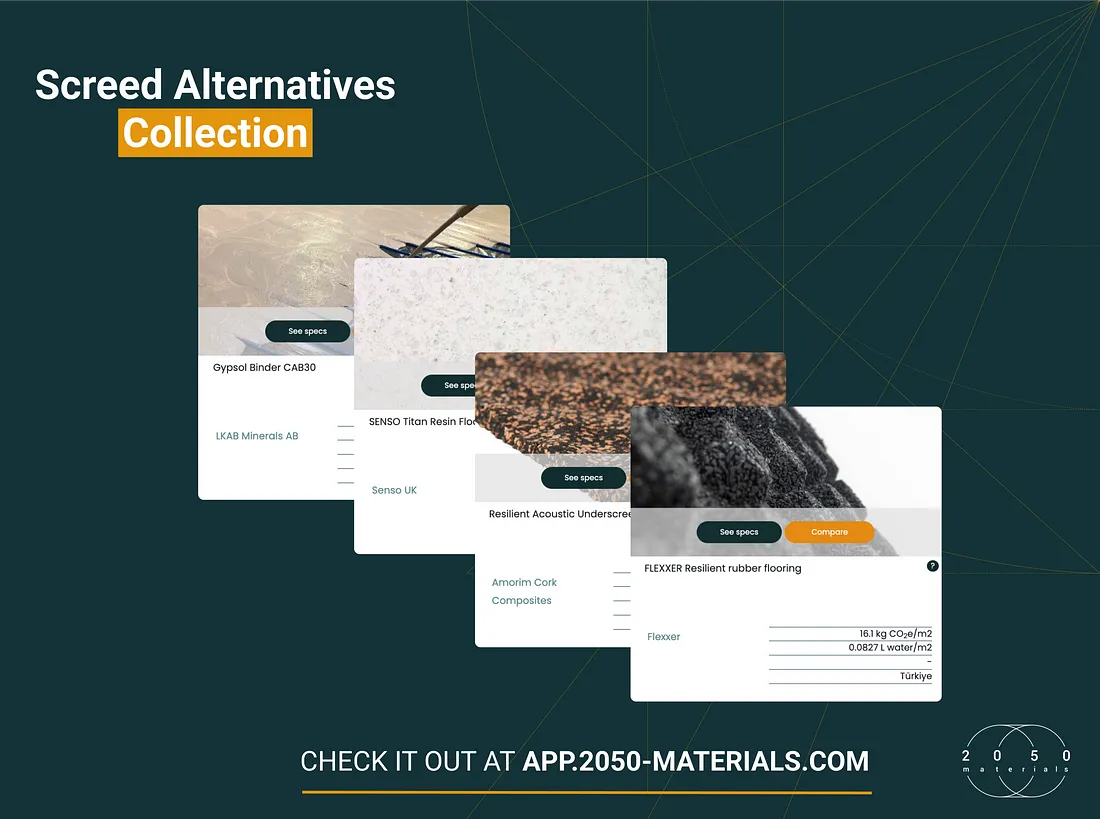
Traditional cement-based screeds are a staple in construction, providing a level surface for flooring and distributing loads across structures. However, their environmental impact has prompted architects and builders to seek low-carbon alternatives which we featured in this exclusive collection. Here are key reasons to consider screed alternatives:
- High Embodied Carbon: Traditional cement-based screeds often have high embodied carbon due to the significant emissions associated with cement production. Reducing or replacing screed can help lower a building’s overall carbon footprint.
- Energy-Intensive Production: The production process for cementitious materials involves energy-intensive processes, contributing to significant greenhouse gas emissions.
- Resource Depletion: Screeds typically rely on raw materials like sand and aggregates, which are finite resources. Overuse can strain natural reserves and disrupt ecosystems.
- Waste Management: Construction projects often produce excess screed material, leading to waste that may not be easily recyclable or biodegradable.
- Transport Emissions: Screed materials are often heavy, resulting in higher transportation emissions. Locally available or lighter alternatives can reduce these impacts.
- Alternative Performance Benefits: Some alternatives, like dry flooring systems or prefabricated panels, may offer better thermal performance, improved durability, or quicker installation, aligning with sustainable building goals.
- Innovative Low-Carbon Materials: Alternatives such as lime-based, hemp-based, or gypsum-based screeds often have lower embodied carbon and can incorporate recycled or renewable materials.
 This article introduces six innovative low-carbon screed alternatives that address these challenges, offering detailed insights into their sustainability performance, advantages, and use cases.
This article introduces six innovative low-carbon screed alternatives that address these challenges, offering detailed insights into their sustainability performance, advantages, and use cases.
1. Mastic Asphalt by Gjutasfaltföreningen
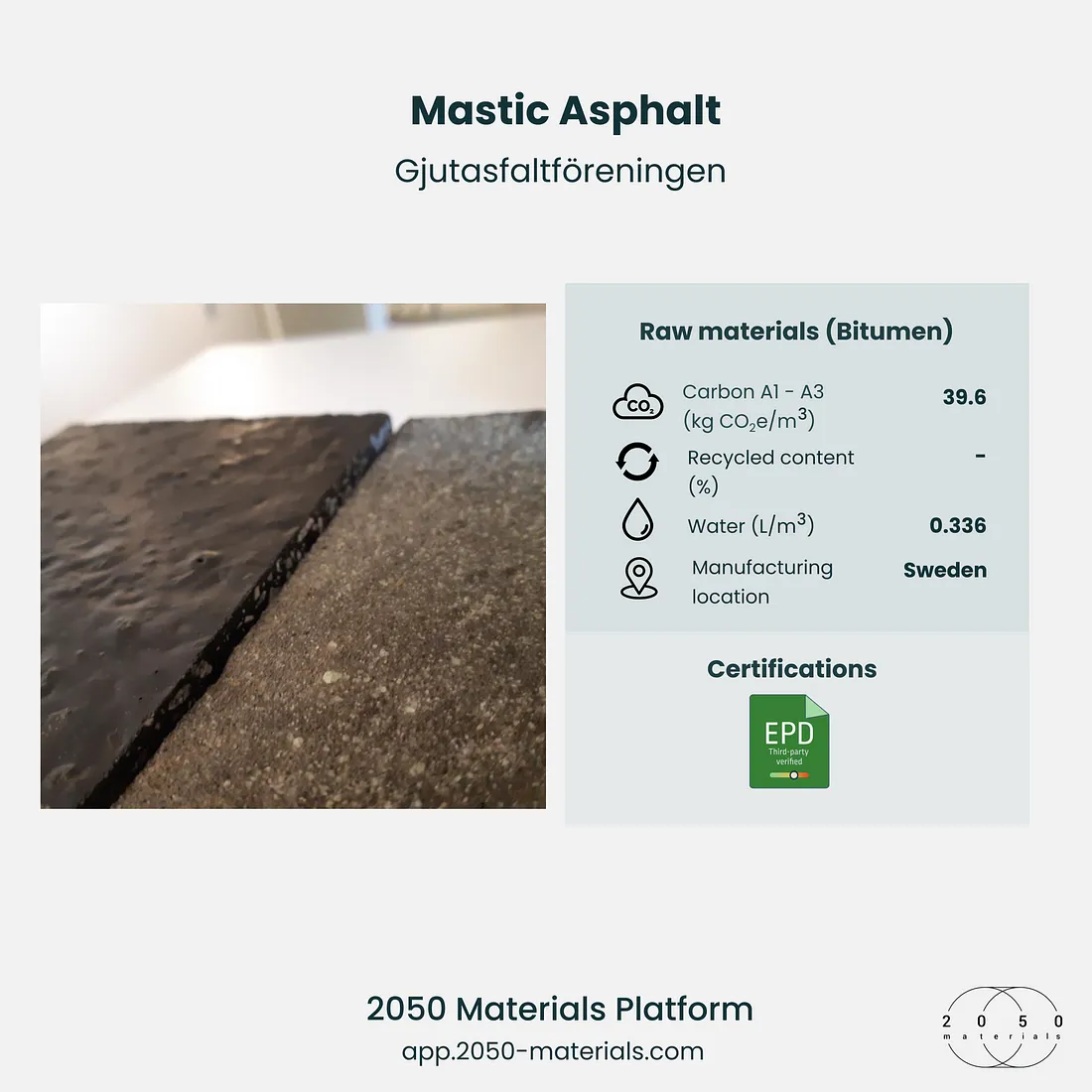
Overview
Mastic Asphalt by Gjutasfaltföreningen is a durable and water-resistant flooring material composed of bitumen. With a lifespan exceeding 50 years, it is particularly suited for outdoor applications exposed to harsh weather conditions.
Sustainability Performance
- Long lifespan reduces the frequency of replacements, conserving resources.
- Minimal maintenance requirements reduce associated environmental impacts.
- EPD-certified to validate its environmental performance.
Advantages
- Highly durable and resilient under continuous stress.
- Excellent water resistance for outdoor applications.
- Withstands heavy loads and traffic.
Use Cases
- Outdoor walkways, terraces, and sports areas.
- Roofing and waterproofing projects.
- Industrial settings requiring robust flooring solutions.
2. SENSO Titan Resin Floors (Terrazzo) by Senso UK
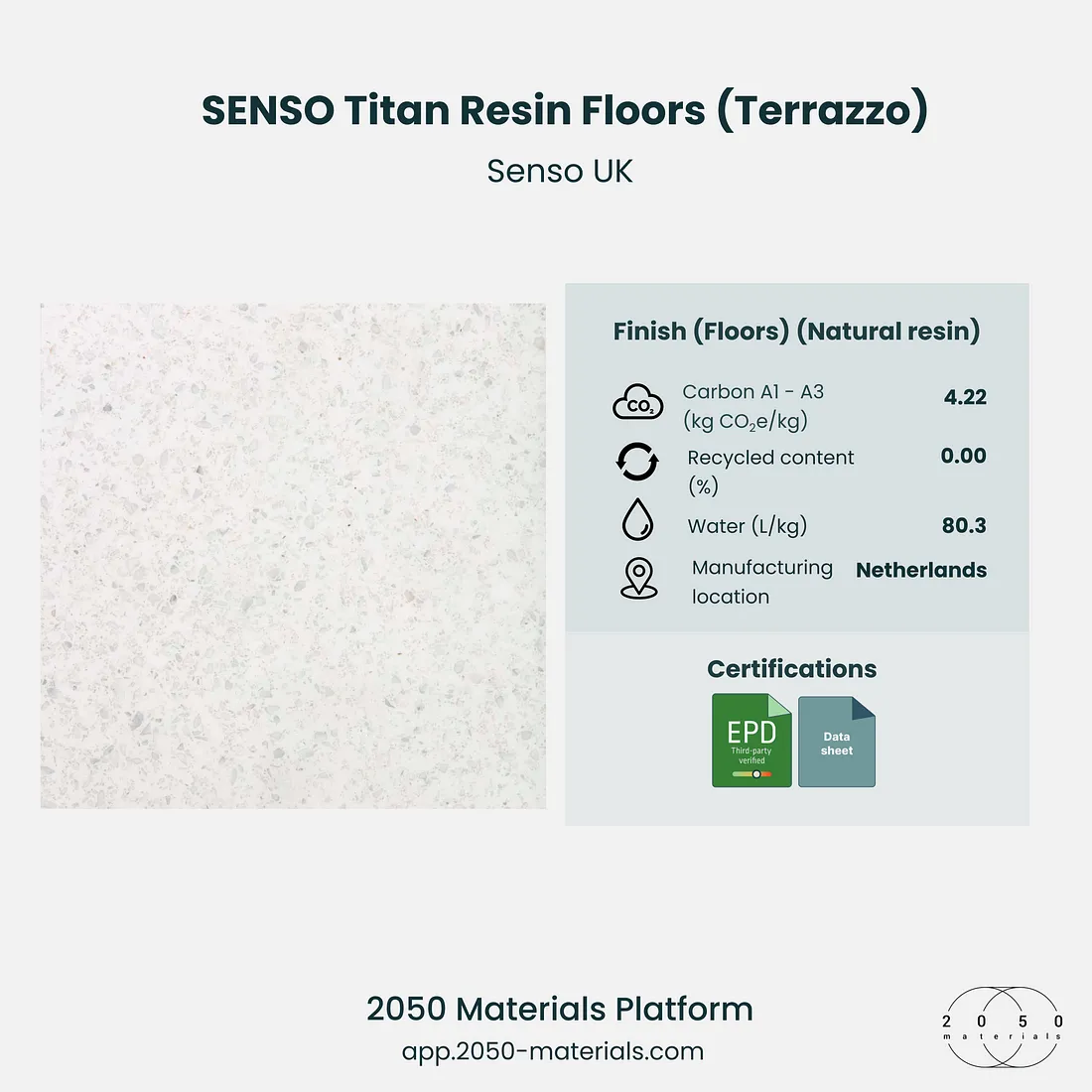
Overview
SENSO Titan Resin Floors by Senso UK blend bioresin with broken marble fragments to replicate the timeless elegance of terrazzo flooring. Using a freeflow broadcast method, it offers a striking finish.
Sustainability Performance
- Made with natural bioresin, reducing dependency on petrochemical materials.
- Long-lasting design minimizes material turnover and associated waste.
- EPD-certified, ensuring transparent environmental credentials.
Advantages
- Customizable designs ranging from artisan to consistent finishes.
- Scratch-resistant and durable for high-traffic areas.
- Easy to clean and maintain over time.
Use Cases
- Residential interiors with a focus on aesthetics and sustainability.
- Commercial spaces like showrooms, galleries, and offices.
- High-traffic areas requiring a decorative yet robust finish.
Explore SENSO Titan Resin Floors on 2050 Materials platform.
3. Resilient Acoustic Underscreed U85 [4/2] by The Cork Flooring Company
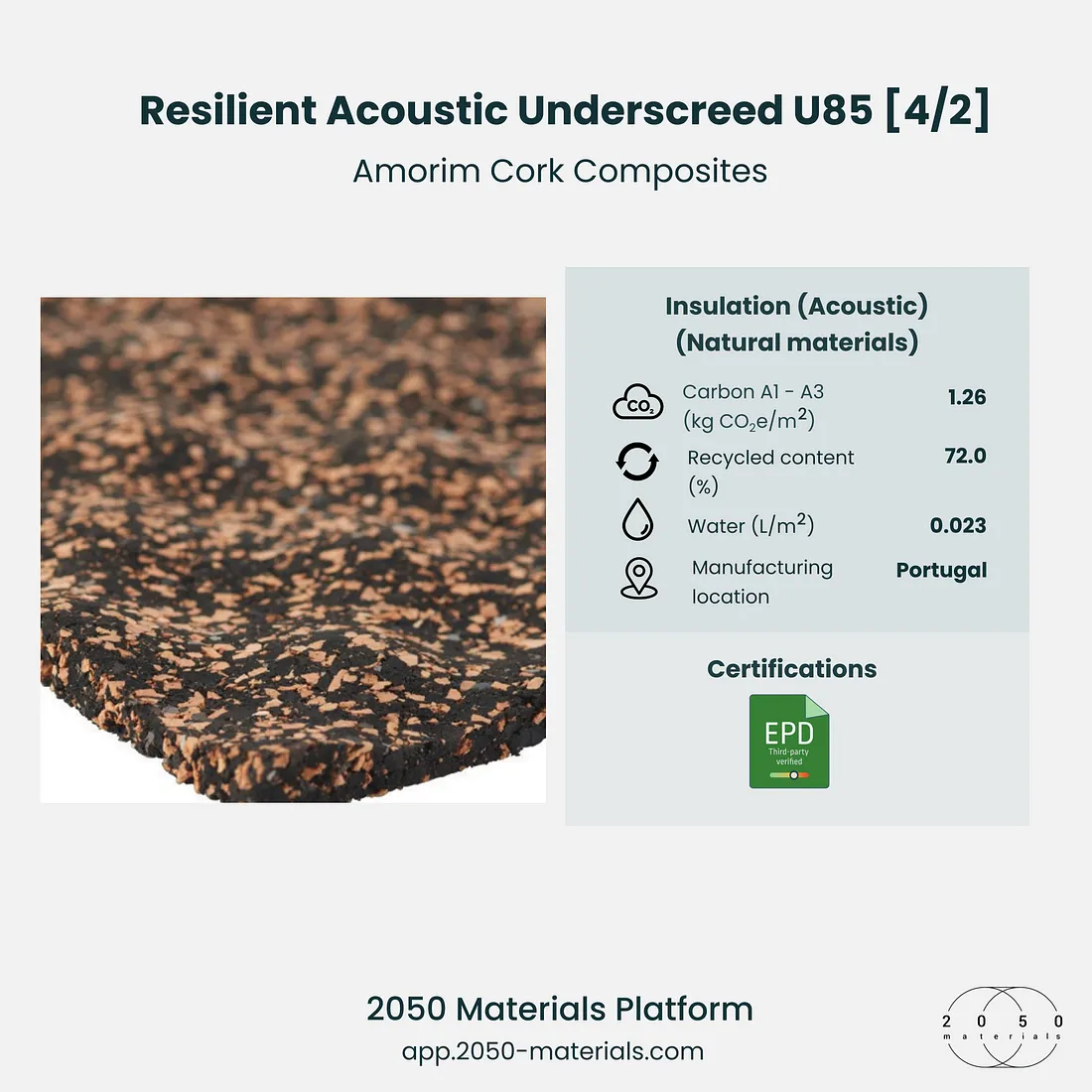
Overview
The Resilient Acoustic Underscreed U85 by Amorim Cork Composites combines natural cork, recycled polyurethane foam, and recycled rubber to create a sublayer that enhances acoustic insulation while supporting the screed.
Sustainability Performance
- Utilizes pre- and post-consumer waste materials, reducing landfill dependency.
- Renewable cork content contributes to a lower carbon footprint.
- EPD-certified to validate its environmental performance.
Advantages
- Superior acoustic insulation improves indoor comfort.
- Enhances thermal performance, contributing to energy efficiency.
- Lightweight and simple to install in various projects.
Use Cases
- Apartment complexes prioritizing soundproofing between floors.
- Offices and retail spaces requiring quiet environments.
- Residential buildings seeking a low carbon sublayer for screeds.
Explore Resilient Acoustic Underscreed U85 on 2050 Materials platform.
4. FLEXXER Resilient Rubber Flooring by Flexxer
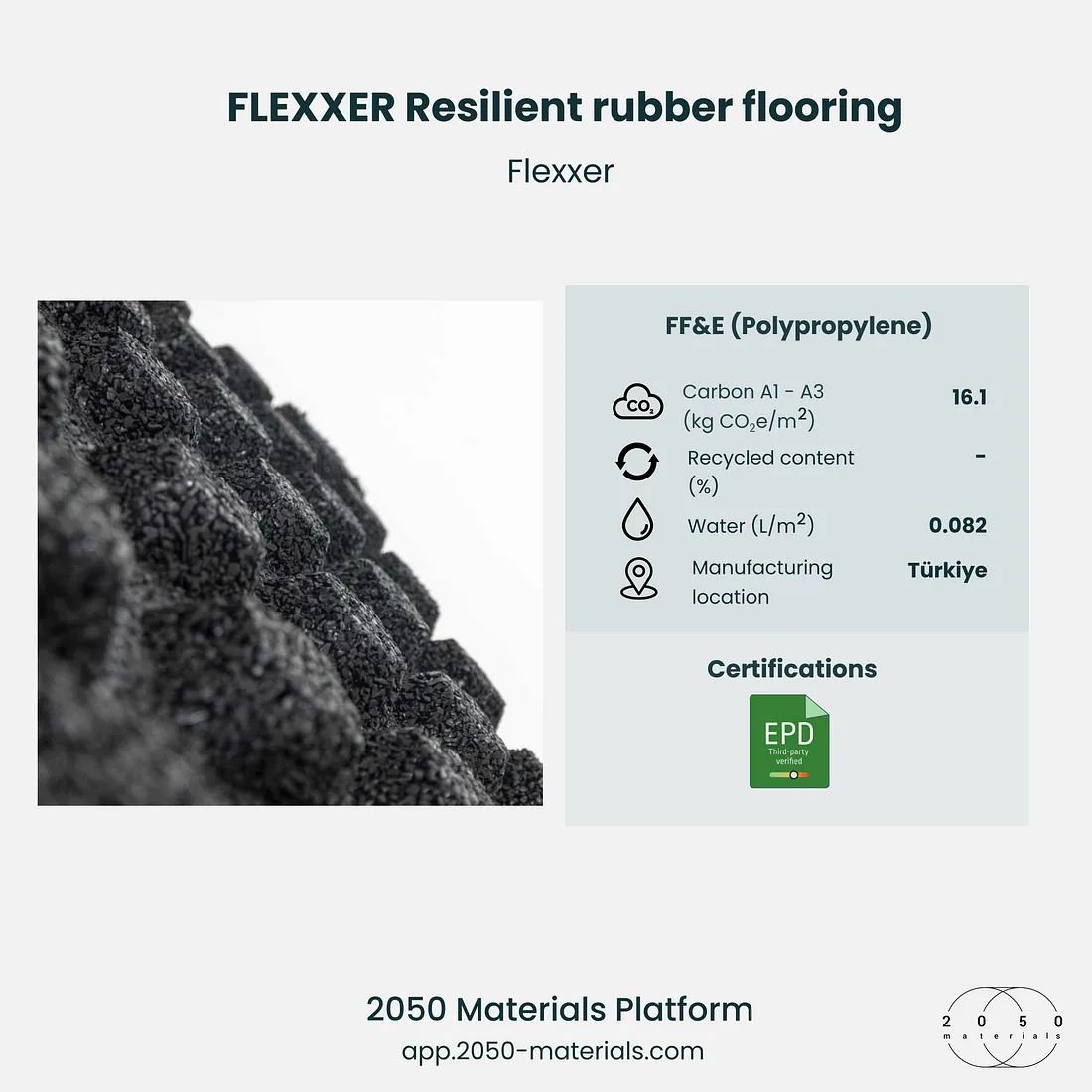
Overview
FLEXXER Resilient Rubber Flooring by Flexxer is made from polypropylene, offering a flexible, durable, and customizable solution for a variety of applications, including decorative purposes and insulation.
Sustainability Performance
- Durable design reduces the need for frequent replacements, conserving resources.
- Manufactured with low impact on ambient environments, minimizing odors and emissions.
- EPD-certified, ensuring its alignment with sustainability goals.
Advantages
- Customizable colors and designs to fit project needs.
- Combines sound and thermal insulation properties.
- Resistant to wear and easy to clean.
Use Cases
- Playgrounds, sports fields, and fitness centers.
- Decorative flooring for residential and commercial interiors.
- Insulated sublayers for thermal and acoustic performance.
Explore FLEXXER Resilient Rubber Flooring on 2050 Materials platform.
5. Gypsol Binder CAB30 by LKAB Minerals AB
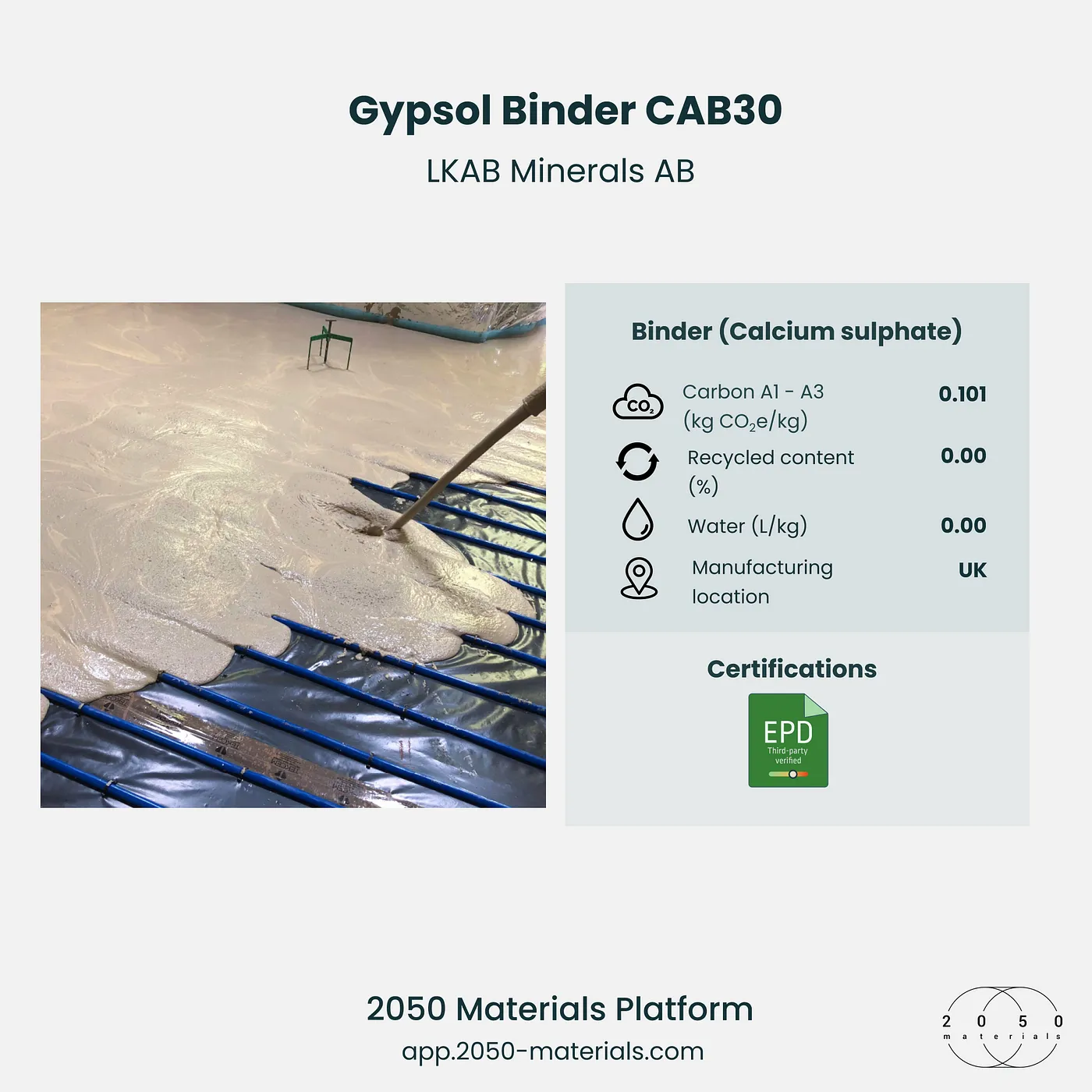
Overview
Gypsol Binder CAB30 by LKAB Minerals AB is a self-leveling binder composed of over 95% synthetic anhydrite, an industrial by-product. It is mixed with fine aggregate and water to create a durable floor screed.
Sustainability Performance
- Replaces a significant portion of cement, drastically lowering embodied carbon.
- Utilizes synthetic anhydrite, promoting resource efficiency and waste reduction.
- EPD-certified for transparency in environmental impact.
Advantages
- Pumpable and self-leveling, reducing installation time and labor.
- Durable and compatible with underfloor heating systems.
- Consistent quality and performance across applications.
Use Cases
- Residential and commercial properties with underfloor heating.
- Large-scale construction projects requiring efficient screed solutions.
- Spaces needing smooth and durable flooring finishes.
6. Limecrete by Limecrete
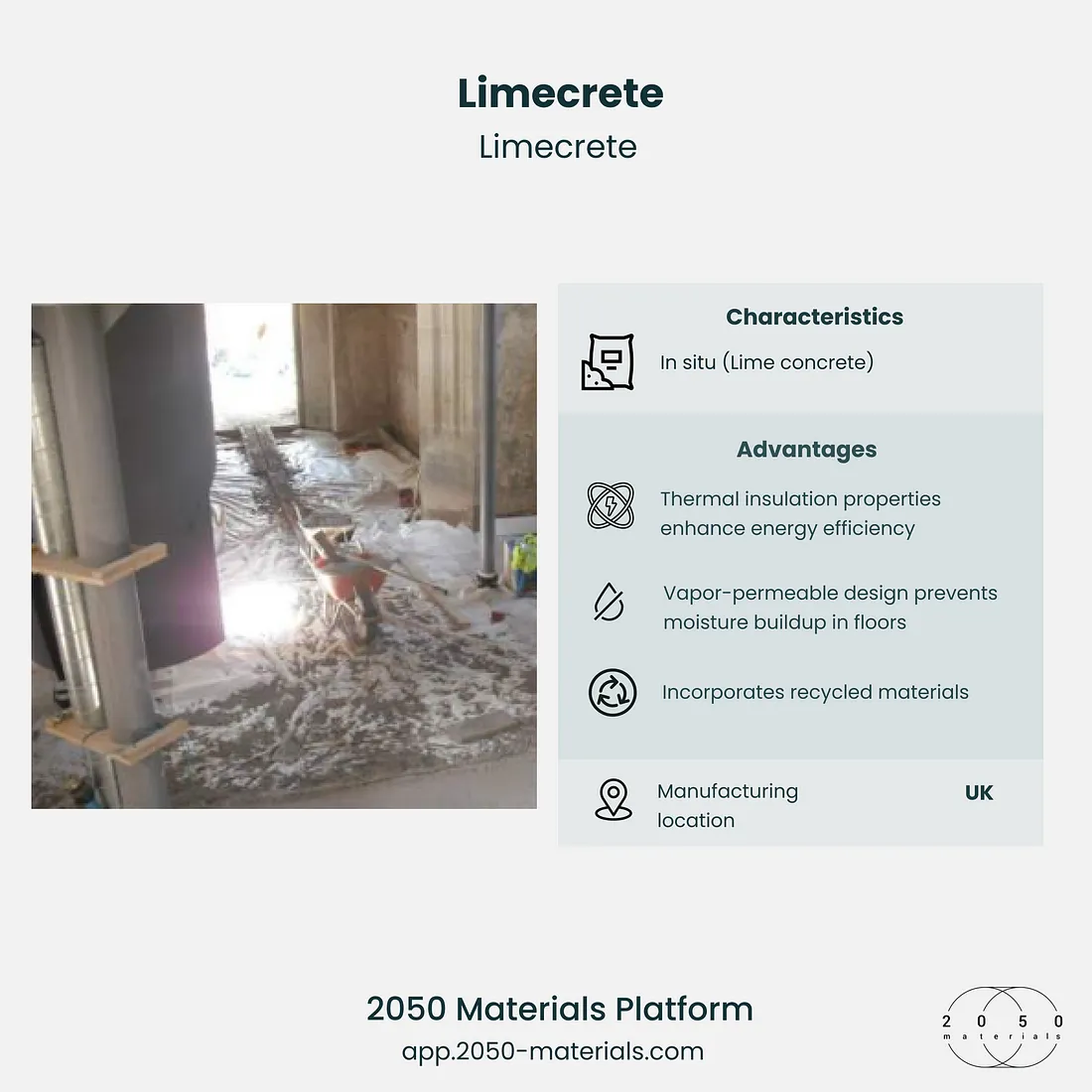
Overview
Limecrete by Limecrete is a lightweight alternative to traditional screed, incorporating recycled foamed glass insulation and lime-based aggregates to achieve superior thermal performance and reduced carbon emissions.
Sustainability Performance
- Lime-based composition emits less carbon than cement-based products.
- Incorporates recycled materials, reducing resource extraction and waste.
Advantages
- Thermal insulation properties enhance energy efficiency.
- Vapor-permeable design prevents moisture buildup in floors.
- Lightweight material simplifies installation and reduces transport emissions.
Use Cases
- Heritage renovations requiring breathable materials.
- New builds prioritizing low-carbon materials.
- Green building projects focusing on thermal efficiency.
Conclusion
The shift toward low-carbon screed alternatives addresses critical environmental challenges while providing enhanced performance benefits. Products like Limecrete, Gypsol Binder, and SENSO Titan Resin Floors exemplify innovation in the construction industry. By integrating these solutions, builders can achieve superior outcomes while significantly reducing the environmental footprint of their projects.
Go over the certifications and environmental data for each of the products featured in this article in this curated collection.
Related articles

Climate-Resilient Materials for the Built Environment: A Data-Centred Prime
As climate volatility intensifies, resilience metrics are fast becoming as critical as carbon data in material selection. This article outlines why adaptation is now a design imperative, how materials can be evaluated through a systems lens, and what KPIs project teams should demand. From self-healing concrete to fire-rated façades, we present a structured taxonomy of resilient materials, explain how to embed this intelligence into digital design workflows, and propose next steps for specification, benchmarking, and procurement.
Read more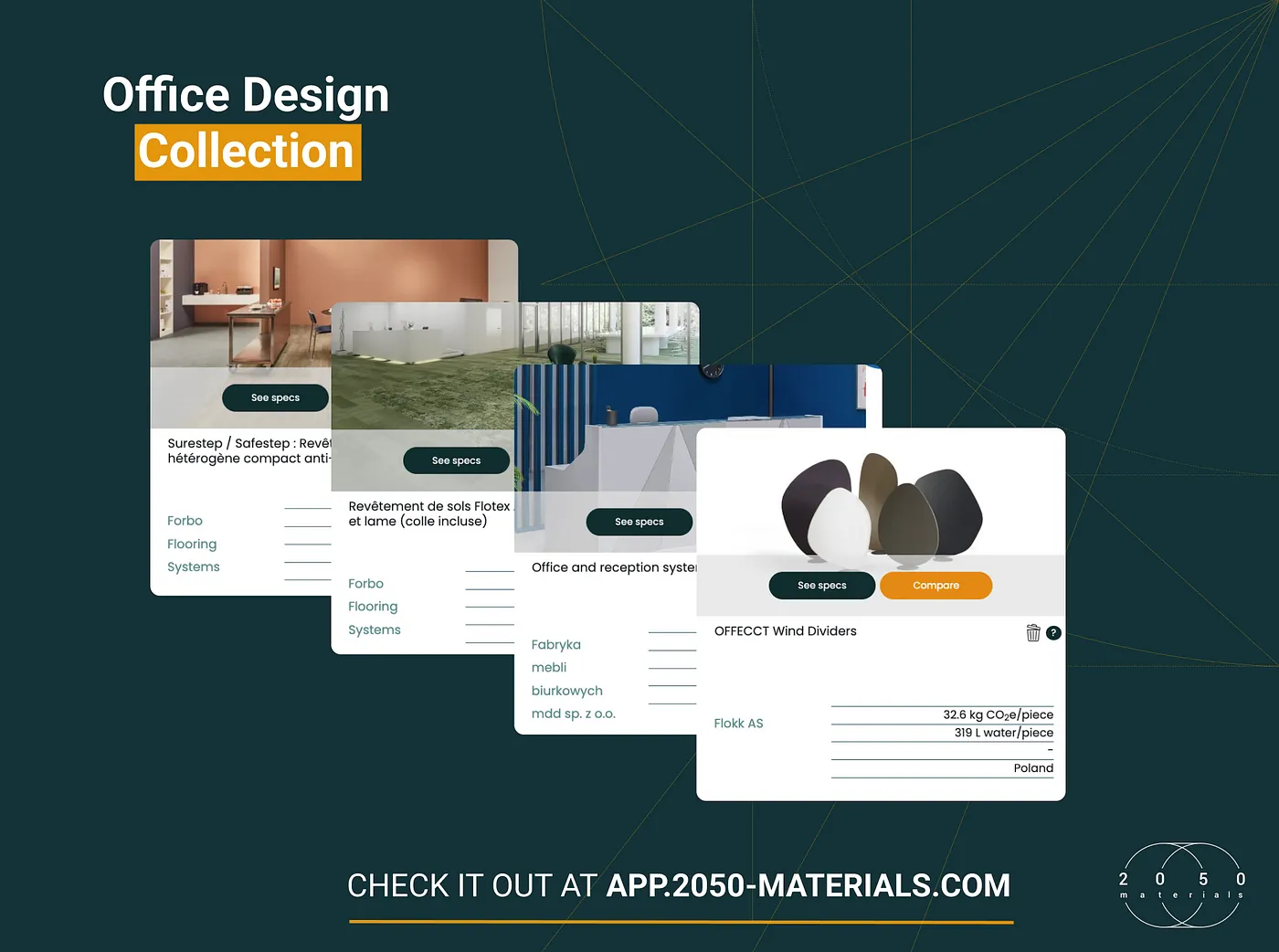
The Most Interesting Low Carbon Products in Office Design
In this article and collection, we highlight 11 outstanding products that contribute to a lower carbon footprint in office design.
Read more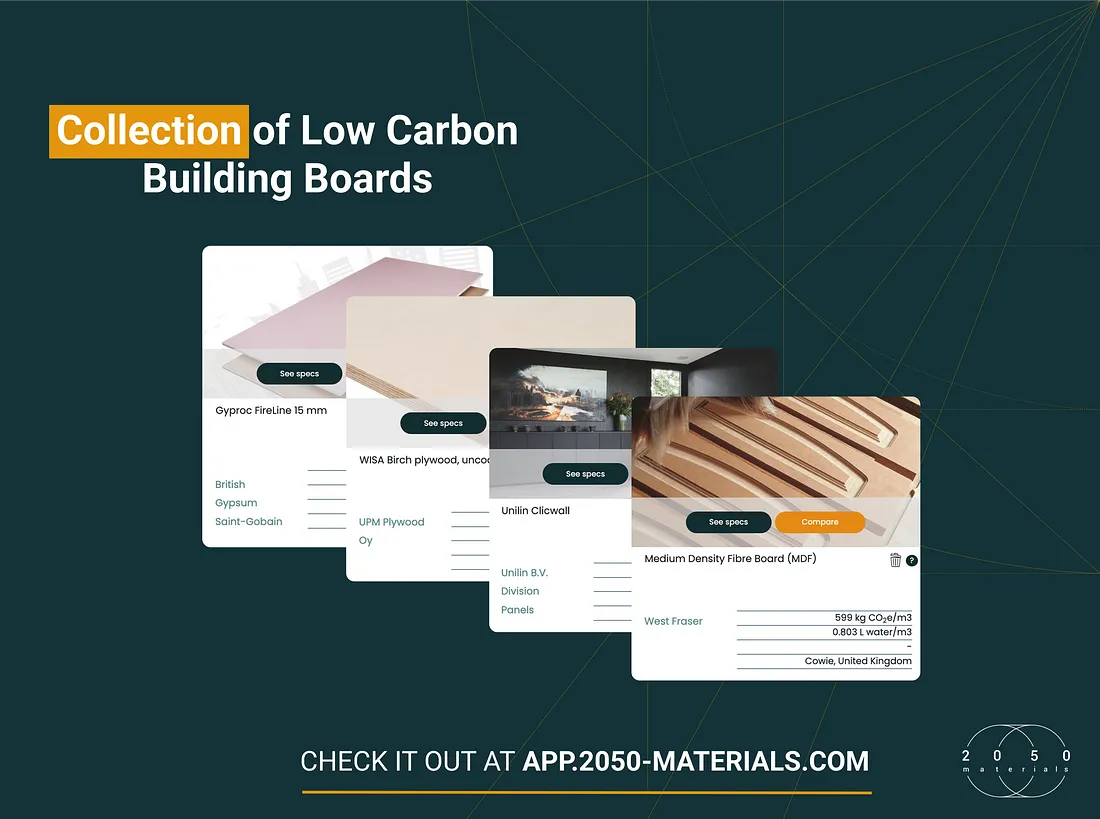
Top Low Carbon Building Boards: Performance, Benefits, and Use Cases
The building boards highlighted in this article and collection showcase low-carbon innovation in modern construction.
Read more